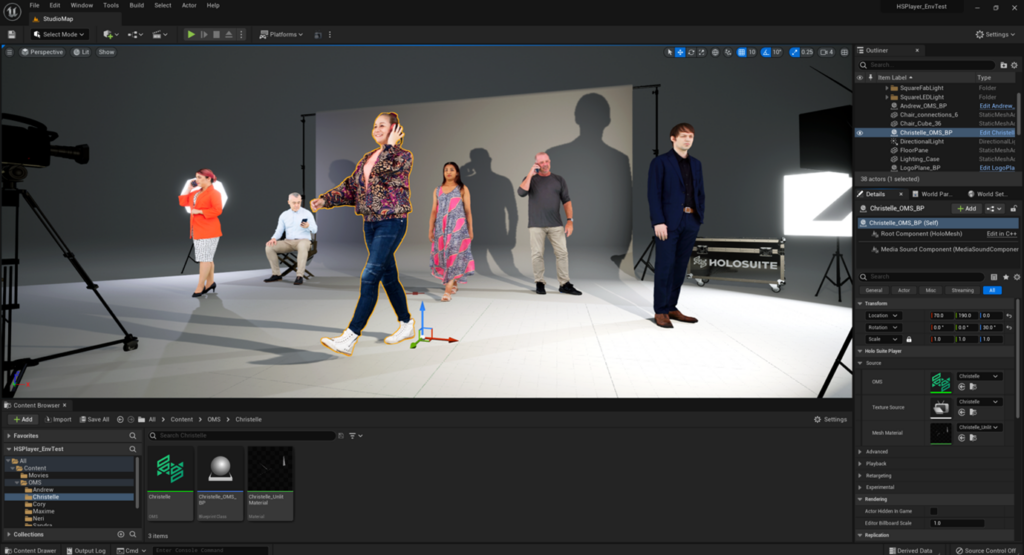It’s been a troubled year for Microsoft’s mixed reality teams, with extensive redundancies and resulting anxiety amongst studio partners, some of whom have significant capital outlay. A new deal with Arcturus, however, offers a way forward for part of the business.
What do we think? Microsoft has pulled back from mixed reality, for now, but its Mixed Reality Capture Studios (MRCS) was a substantive technology, supported by several studio partners. We, and no doubt the studios, are heartened by its continuation. The challenge will be maintaining momentum without the impetus of Microsoft’s mixed reality business.
Arcturus is the new home for Microsoft MRCS
Volumetric video is a technology that uses captured images to reconstruct 3D spaces. Unlike stitching image data from multiple cameras, it reconstructs the entire 3D space as data. This enables the generation of new video content from any position or angle within that 3D space.
It’s an impressive and useful technology, but Microsoft’s foray into the area has been complicated by the almost complete cull of their end-use case, HoloLens, with thousands of redundancies and the ending of related R&D.

Now Arcturus, a company specializing in volumetric video technology, has been chosen as Microsoft’s “preferred partner” for its Mixed Reality Capture Studios (MRCS) solution. The “meat” of the deal is tech transfer of Microsoft’s mixed reality capture-stage technology over to Arcturus, enabling them to offer an all-encompassing solution aimed at enhancing accessibility and versatility within volumetric technology.
The partnership was announced at Siggraph 2023. Links related to the technology on Microsoft’s site now go to Arcturus.
There are three key outcomes resulting from this move.
First, Arcturus will act to connect creators with existing MRCS studios. The list of MRCS license holders includes prominent capture studios, such as Metastage in LA, Dimension in London, and Jump in Korea, with more “expected to join”—an expectation that looks a little more robust following this agreement.
Second, studios aspiring to become MRCS partners can go to Arcturus for licenses and expert guidance in setting up new studios or adapting existing ones.
Third, Arcturus plans to integrate MRCS technology with its own HoloSuite tools, providing users with the capability to edit and stream compressed content across devices, while maintaining quality.
Kamal Mistry, CEO of Arcturus, told us: “Volumetric video is growing rapidly. It has begun to change the way people look at virtual production, mixed reality, music, and sports, and really any format that can benefit from 3D video and free viewpoint video. By adding the MRCS tools, we can accelerate the work we began more than a decade ago and evolve the pipeline to offer new solutions designed to help bring volumetric video to everyone.”
The MRCS software utilizes a network of over 100 synchronized cameras to record moving subjects from various perspectives. The acquired data is subjected to reconstruction processes, generating photorealistic 3D videos for applications such as visual effects, live broadcasts, and mixed reality experiences.
Creators who directly engage with Arcturus will access its in-house solution, which integrates MRCS and HoloSuite technology. This represents a novel approach to volumetric video editing and streaming that encompasses the entire capture process, from initial recording to final distribution. The company says HoloSuite will remain capture agnostic, supporting creators working with volumetric data from sources other than MRCS.